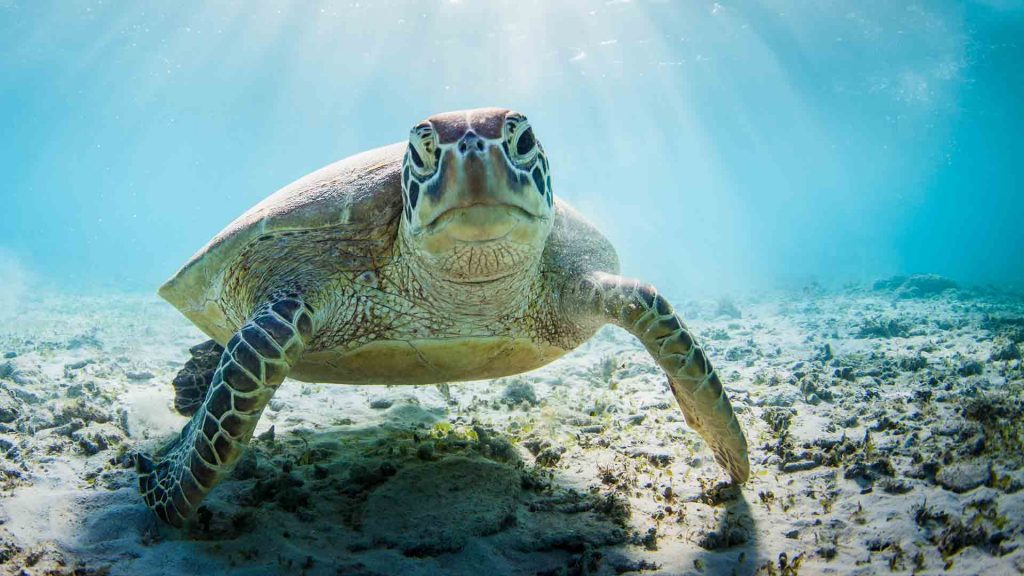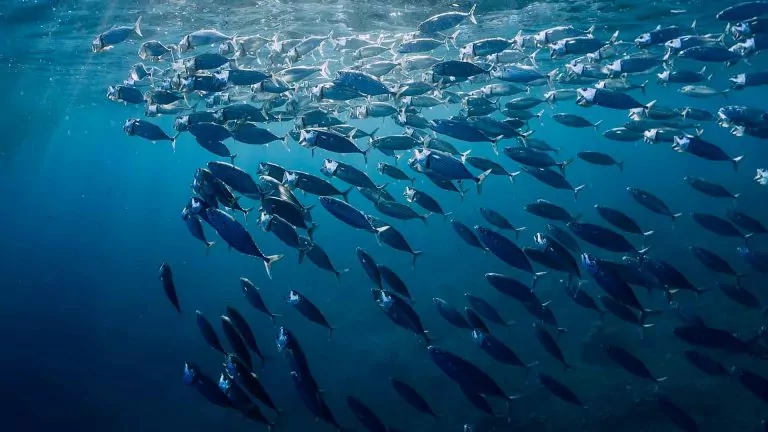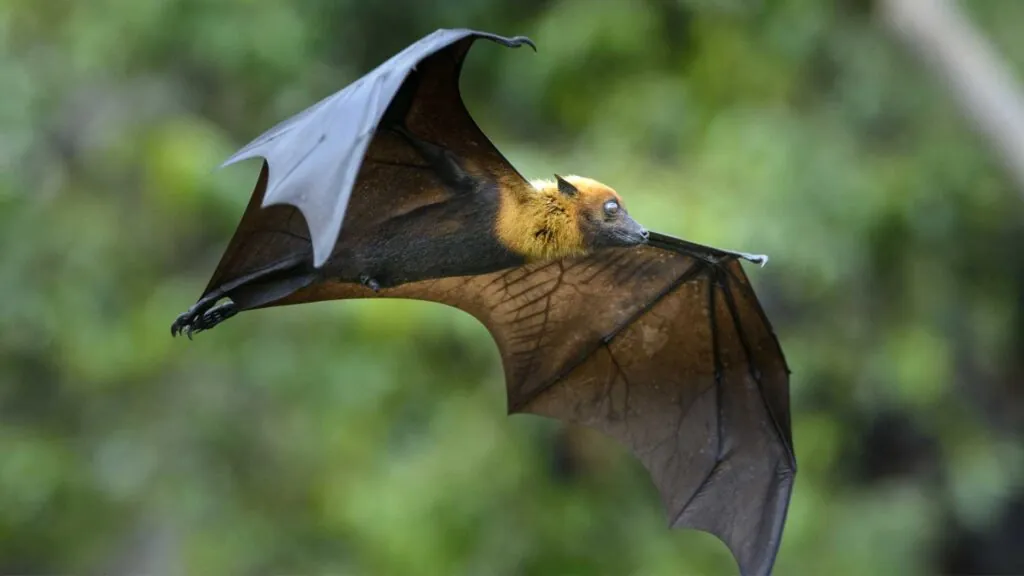Since the advent of global positioning satellites, or at least since their availability for civilians, scientists have found many uses for these devices. One of the more interesting applications is to track animals. Of obvious popular appeal are programs such as “fish with chips.”
A multimillion-dollar “Census of Marine Life” project fitted marine animals in the Pacific Ocean with electronic surveillance tags. As of 2005, about 1,800 sharks, tuna and turtles had been fitted with transmitting devices which relayed information to a satellite when the animal surfaced. By this means, a bluefin tuna was tracked as it crossed the Pacific Ocean three times in 600 days! This fish swam 40,000 kilometers (km) with an average of 66 km/day.
More dramatic still, were the exploits of Nicole, a 3.5 meter long great white shark. This specimen swam 11,000 km from South Africa to Australia and back within three months. Nicole averaged 122 km/day! She swam in a straight line, never less than 5 km/hr, and 60% of the time she stayed within one meter of the surface. It’s obvious she knew where she was going.
Scientists have been astonished to discover how far these and many other animals migrate. Another interesting study involved young fingerling salmon emerging from 16 river systems on the Pacific coast of North America. The tags on several thousand of these fish were scanned as they passed over special receivers placed on the ocean floor from Washington State up to Alaska. This study revealed that the young salmon follow precise migration paths which vary depending upon their river of origin.
The results of these tracking studies intensify the question, long pondered, as to how animals navigate long precise routes through the oceans or skies. As our tools for study become ever more sophisticated, our insights might be expected to increase too. This may be, but the more famous cases still abound in unanswered questions.
Sea turtles
Most of the seven species of sea turtle can be found throughout the world’s tropical and subtropical seas. Despite this wide range, local populations exhibit very specific nesting site preferences and sometimes even a specific preference in feeding sites as well. This might not seem remarkable, until we realize that the nesting and feeding sites may be thousands of kilometers apart. After decades of ecological studies, scientists still have only a poor understanding of the wonders of sea turtle navigation.

Green turtles are a rugged, long-lived species (up to 70 years). As is typical with sea turtles, the female lays her eggs at night in the sand of a wide beach along the seashore. She digs a pit and lays as many as one hundred eggs. After covering the eggs, the mother then retreats into the sea.
Several weeks later, all the eggs hatch at the same time. The hatchlings emerge from the sand and head straight for the ocean. Once immersed, they swim straight out, farther and farther from land with its multitude of avian, crustacean, and human predators. Only about one in one thousand hatchlings survives long enough to mature.
Once in the open sea, young turtles apparently set out for the feeding grounds. Green turtles hatched on beaches of Costa Rica later turn up in Spain, Chile, and Brazil. Then, once mature, females return to the very same beaches from which they hatched fifteen to thirty years previously. Tagging programs with young turtles have never revealed an adult female nesting on a beach other than the one from which she emerged. How do these turtles, out at sea, navigate towards the appropriate beach?
Ascension Island
One of the more remote destinations on earth is Ascension Island. Situated in the mid South Atlantic Ocean, this island of 88 square kilometers lies about 1100 kilometers northwest of Saint Helena, itself an island famous for its remote location. (Napoleon Bonaparte spent his last days on Saint Helena, a site chosen as his prison because its distance from everywhere made escape impossible).
However Ascension Island is even more isolated than Saint Helena. Nevertheless green turtles, feeding in shallow waters along the Brazilian coast, and others in similar habitats near Gabon (Africa), swim due east or west (respectively) to nest on the beaches of Ascension Island. The journey from Africa to the island is 2,500 km and from Brazil to the island is 2,250 km. It is like finding a needle in a haystack. Nevertheless adult female turtles make the journey once every three to four years. Moreover, they do not eat at all during the entire eight month return trip.
Leatherback
Amazing skills in navigation are not unique to green sea turtles. Studies on the largest turtle of all, the leatherback, reveal some interesting details too. Unlike the green turtle, the leatherback forages for food in the deep ocean so they are less tied to specific feeding grounds. Nevertheless, there are only a few dozen places in the world where these turtles lay eggs. Of these, only four beaches attract large numbers of nesting leatherbacks.
One of these four beaches is Playa Grande Beach on the west coast of Costa Rica. Tagging studies have revealed that these turtles travel 2,500 km west from Costa Rica toward the Galapagos Islands and beyond into deeper waters. They confine this travel to a narrow corridor up to 480 km wide. The females return to Playa Grande to lay eggs up to ten times per season. The females of another leatherback population, which feeds on jellyfish in the waters off Canada’s Nova Scotia coast, later proceed to beaches within the Caribbean Sea in order to nest.
Studies on turtle navigation have revealed that young hatchlings react positively to wave direction, the earth’s magnetic field, moonlight, and perhaps chemical gradients. Nobody has, however, established precisely how adult turtles navigate thousands of kilometers in the open ocean, or even why they do so. Even if turtles are able to orient themselves in a specific direction, how do they locate the particular beach from which they hatched so many years previously and on which they spent so short a time?
Freshwater eels
Eels are long snake-like fish which can grow up to 3 meters long. While some might consider such creatures ugly, many in Europe and North America consider them very tasty snacks.
However, there was one longstanding mystery concerning the freshwater eels of eastern North America and Europe. Why were no young eels ever observed? Did they spring fully grown from their parents, like the mythical goddess Minerva who was imagined to have sprung mature and fully clothed from Jupiter’s brain?
A Danish biologist solved the problem early in the twentieth century. Johannes Schmidt discovered that freshwater eels from both sides of the Atlantic spawn in a remote region of the Atlantic Ocean east of the Bahamas Islands. As is typical when one mystery is solved, this answer raised many new questions. How and why do all these eels navigate so far?
Sargasso Sea
The Sargasso Sea, a region of the Atlantic Ocean where water currents slowly move in a gigantic gyre (whirlpool), is roughly the size of Australia. Its existence is a byproduct of the Gulf Stream which carries warm water north along the eastern coast of North America and then eastward toward Europe, and the North Equatorial Current which carries cold water south towards Africa and then west towards the Caribbean. It so happens that this sluggish whirlpool region of the Atlantic is very rich in mineral nutrients. Sargassum, a distinctive floating brown seaweed, grows so thickly there that the sea surface sometimes looks more like a meadow than like open water. Naturally this region is a wonderful habitat for sea life and there the eels go to mate.
In the fall, eels which are about ten years old, undergo physical and physiological changes. They stop eating as their stomachs shrink, and their reproductive organs expand. These mature specimens then move from their preferred freshwater habitats down streams to rivers, and from rivers to the sea. They proceed from far inland along the Atlantic coast from Mexico up to Labrador, from Greenland’s coast and Iceland, from the British Isles, from Scandinavia and from lands bordering the Mediterranean and Black Seas.
As these eels converge on the Sargasso Sea, they show no specific preference to mate with specimens from their part of the world. Each female then lays up to twenty million eggs. These hatch into thin, flat, almost transparent creatures about one half cm long. As they move north in the Gulf Stream, those which mature first, apparently stop off in the fresh waters of North America. Others may take longer to mature, up to two or three years and these drift towards Europe. The American and European populations look different, but biologists think that genetically they may be almost identical.
It is apparent that we know some of the story concerning eels but there are obviously many blanks yet to fill. What causes the eels to migrate to a common area in the open ocean? Why do they not spawn closer to their feeding grounds? Drifting towards coastal areas is obviously easy enough, but how do the eels navigate their way back to the Sargasso Sea? There obviously is more to freshwater eels than a tasty snack.
Monarch butterflies
One of the most amazing examples of navigation is that of the monarch butterfly. During the spring, these insects leave tiny stands of trees in Mexico where they spent the winter. They fly northeast to destinations throughout eastern North America. Then in the fall, several generations later, these butterflies head back to the very same stands of trees from which their great great grandparents had emerged the previous spring.

Several questions naturally arise. It may be that day length triggers the instinct to fly southwest in the fall, but how do these tiny brains identify the appropriate direction? Laboratory studies have shown that adult butterflies emerge at dawn from the chrysalis. This time is apparently internalized within each insect’s 24 hour physiological clock. (Your own physiological clock tells you, for example, when it is time to sleep and time to eat.)
It is the insect’s awareness of passing time which allows these butterflies to navigate with the sun as their reference point. As the sun moves across the sky, the butterflies automatically adjust their orientation to the sun according to the time of day and thus they maintain a constant southwest direction. If any butterflies are artificially caused to emerge from the chrysalis at a different point in the day, they cannot navigate according to the sun’s position and consequently they get lost.
Imagine a navigating system that automatically adjusts for time of day! This is a fancy computer to cram into a very small insect brain. Obviously the whole system was designed to function in a sophisticated manner while using on a few simple cues. In the spring after over wintering, these very same butterflies will fly toward the northwest.
Arctic birds
In certain instances a much simpler navigating system than that of the butterflies may suit the needs of an animal. This situation applies to arctic birds on their annual migration south. Navigation apparently is most difficult near the poles since many useful parameters, like magnetic field, all converge.
During the late summer of 2005, scientists carried out a study of arctic bird navigation. As flocks of birds passed over the Bering Strait between Alaska and Siberia, scientists briefly tracked them by radar. From hundreds of such tracks, the travel trajectories (direction) could be calculated.
The scientists had calculated the various routes that birds would follow if they were using one or other navigational cues. If the birds were navigating by means of a magnetic compass, for example, they would proceed towards the northeast (not an ideal direction). If they used the sun as their reference point, adjusting their calculations according to time of day, they would proceed towards the east. However if they followed the sun without adjusting direction for time of day, they would proceed in a southeast direction. This was indeed the path these birds appeared to follow.
The end result of this strategy is that their route then traces an arc, part of a great circle. Such a route is by definition the shortest distance connecting two points on the globe. For people relying on technology, a great arc requires continuous changes in compass direction. Navigating by compass (magnetic field) is longer but much easier. Obviously, however, one expends less energy on a shorter route.
In the case of arctic birds, lacking complex computer programs, they nevertheless manage to follow a sophisticated path out of the arctic. Scientists cannot refrain from asking how these birds learned such a navigational strategy.
Conclusion
There is no doubt that tracking studies have revealed exciting details about animal navigation. In addition, physiological studies continue to give us glimpses into methods that these creatures use to plot their routes.
But none of these environmental cues would be any help at all without senses designed to perceive them, and brains to interpret the data correctly, and to act upon it. Secular scientists may eventually describe the tracking mechanisms ever so precisely, but they will never be able to tell us why or how these remarkable designs were conferred on these creatures.
Christians know.
Dr. Margaret Helder is the President of the Creation Science Association of Alberta. This article first appeared in the January 2006 issue.











